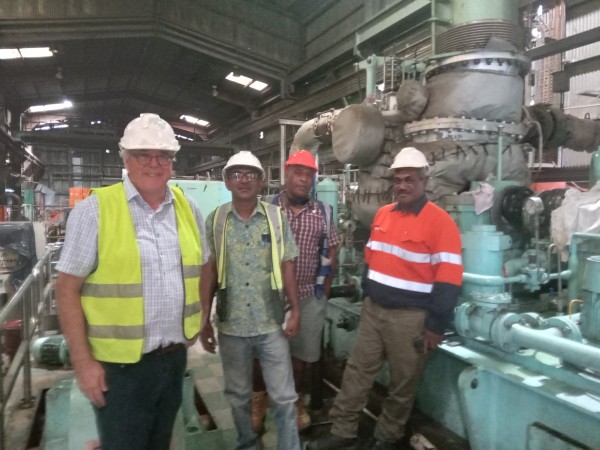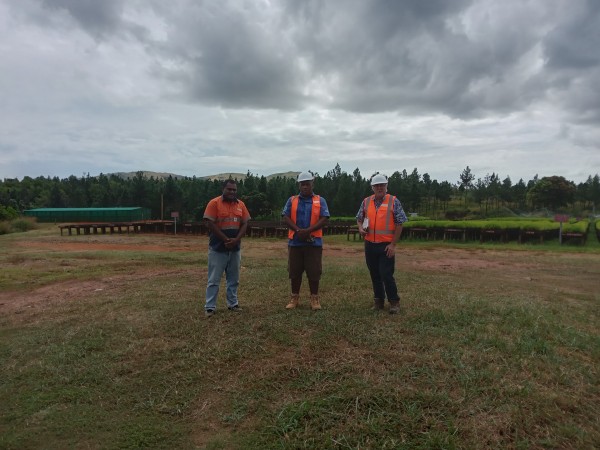How did you come to be volunteering with VSA?
I’m a chemical engineer and used to work at the University of Canterbury. In 2020 I retired and was looking for something to do, when I came across this advertisement for a two-year assignment as a renewable energy advisor in Fiji with VSA. I went through the recruitment process and got that position, but that was just before Covid, so it was converted to an e-volunteering assignment for a year. After that, nothing happened for another year – and then the chance came to actually go, so I thought I’d better!
I headed over to look at bioenergy in the Pacific. I had an idea of doing lots more countries but in the end, I only got to see two: Fiji and Samoa. I was overseas for six months.

Chris (left) at the Lautoka Sugar Mill in Fiji.
Who was your partner organisation?
I was working with Pacific Community (SPC). They’re an umbrella international development organisation that help administer funding for projects in the Pacific. My particular project was part of a much bigger project SPC was responsible for, looking at energy security in the Pacific.
What did you do on assignment?
My project was about bioenergy, which involves taking biomass of one sort or another and trying to work out how much is available for energy and how it might be used. I went to Fiji and Samoa to have a look at their existing bioenergy projects and get some ideas for new opportunities, then wrote up my findings in a pair of reports.
In Fiji, I spent most of my time working in an office in Suva. But the most interesting thing I got to do was tour round both Viti Levu and Vanua Levu and see lots of sites, including Nabou Green Energy, which takes in wood and produces electricity from it, Lautoka Sugar Mill, and Tropik Wood Sawmill, which also generate electricity from sugar cane bagasse and wood residue respectively. I also travelled around Samoa, seeing similar sites.
In both places, I found that while some things were going well, there were also lots of challenges. For example, some of the places we visited had difficulty getting feedstock. In Samoa, for instance, we visited Afolau Gasification Plant, which was in a coconut plantation that had become overgrown. But they don’t have any commercial loggers in Samoa, so it was left to the people who run the coconut plantation to cut down the extra trees and bring them in. And they had to chip the wood up by hand using axes to fit the machinery they had as the wood-chippers supplied couldn’t handle large diameter trees. That was a huge amount of labour to prepare – 50 tons a day of wood for gasification.
Overall, it was a really interesting experience because I went with two Fijians, which gave me a kind of access I might not ordinarily have had.

Chris (right) visiting the Tropik Wood Sawmill.
What was special about the places you volunteered in? Any advice for those heading out on assignment?
I had been to Fiji before and had sort of the tourist’s impression of Fiji, which is a little bit different from what it’s actually like! When I first arrived on assignment, I found it a little bit challenging, just around things like the poverty and the climate. But both Fiji and Samoa are also beautiful places and the people are incredibly friendly.
My advice would be, when you first go, take some time to get used to the climate. It’s easy to think you can just do what you can do in New Zealand, but you really can’t, it’s too hot and humid, you have to take things slowly, at least at first! And I’d say also, take some time to get out of the main cities. There are lots of really beautiful places you can visit outside of Suva and Apia. Try and make the time to do it, because that’s one of the real highlights of volunteering in the Pacific.
